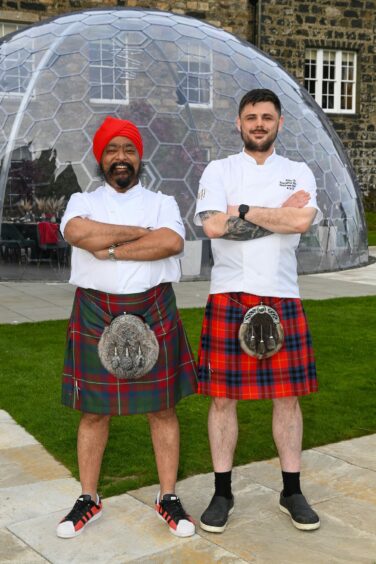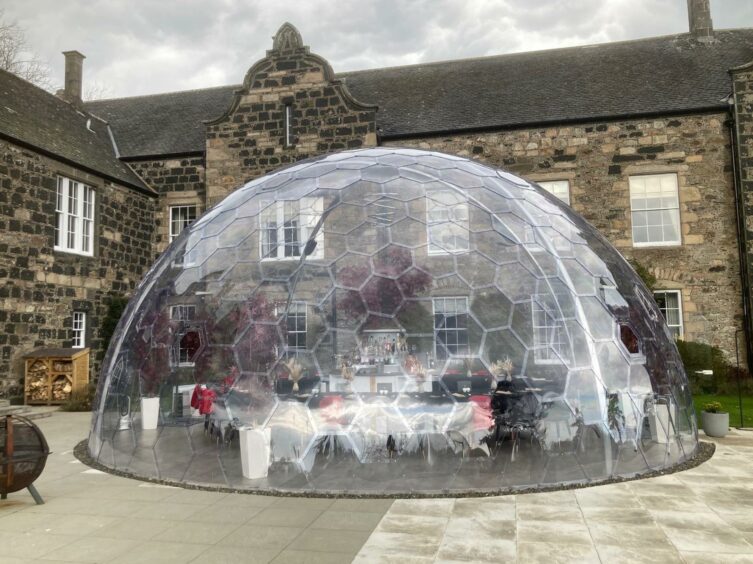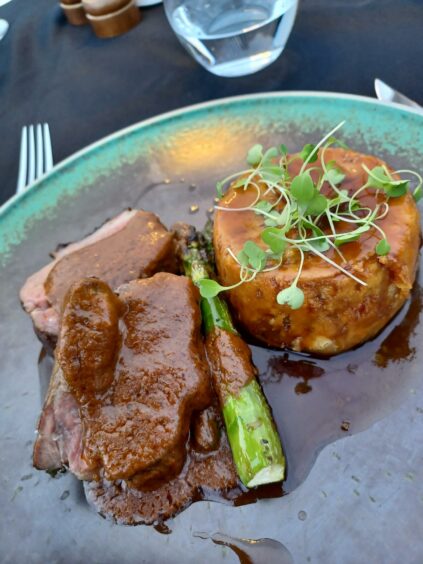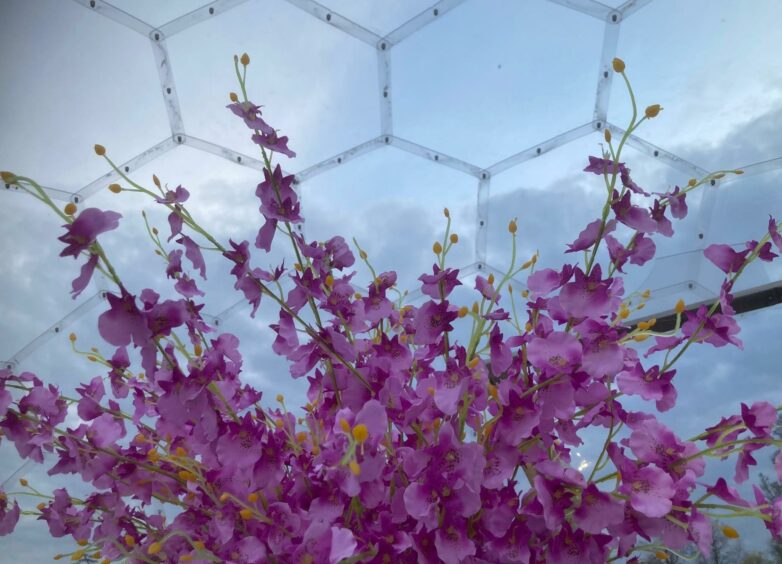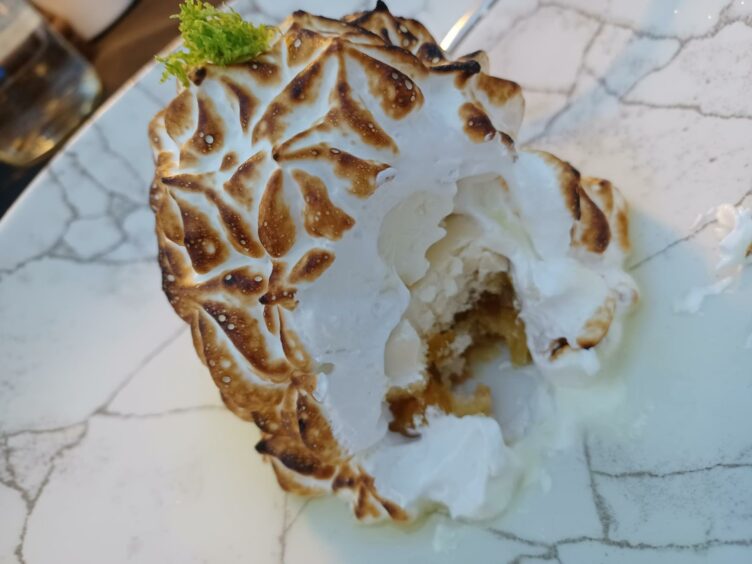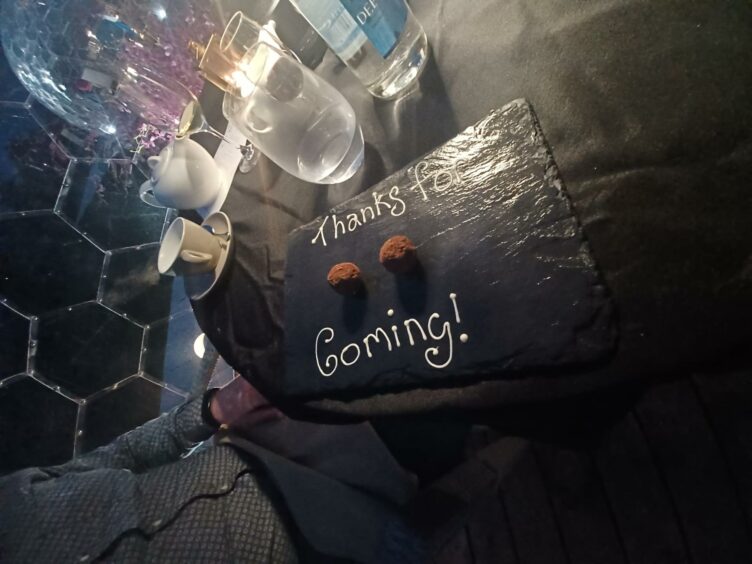Tony Singh is talking butteries. And – fittingly – he’s on a roll.
“My grandad was a door-to-door salesman and would come up to Aberdeen in the summer,” he says. “He loved a rowie, so I’m a massive fan.”
As he talks, Tony tucks in to a buttery that – to his great credit – he has agreed to eat on camera for the Press and Journal.
He makes it clear, however, that the supermarket rowie I brought to the interview is not up to his usual standards.
And, typically, he has something to say about this.
“It all goes back to traditional things,” he says, continuing. “Before, you were using the lard from the pork, which came from the local pig farmers. Now with international supply chains, it’s all about profits. They need to go back to the traditional ways.”
He’s not finished. Tony, it becomes clear, has much to say about the lost art of buttery making. In an impassioned speech, he calls for getting palm oil out of all butteries.
And, to conclude, he puts in a plea to place rowies on the protected designation of origin list, alongside Parma ham, Camembert and Champagne.
“We have to protect these things, they are our culinary heritage,” he says.
A rich career
It is, of course, this passion for food that has propelled Tony to the top of his profession.
The Leith-born chef can be credited with helping to bring Scottish cooking into the modern age by championing its versatility.
An early career in some of Scotland’s most prestigious kitchens allowed him to eventually branch out on his own to create dishes that celebrated the richness of Scottish fine dining while also bringing in flavours from Tony’s Punjab background, and further afield.
For better or worse, this helped ignite a slew of imitations of, for example, Tony’s signature haggis pakoras. But it also brought a wider diversity to Scottish restaurants.
And while Tony characteristically shrugs off any suggestion that he was a conduit of this change (“emulation is the greatest flattery”, he says), he does acknowledge that Scottish food has the quality – and back story – to mix it with the rest of the world.
Take his view on one of Scotland’s most famous dishes, for example.
“Haggis is a fantastic product,” Tony says. “It shows the trading links and culinary skill of Scottish cuisine. It uses the cheaper cuts. It’s highly spiced with white pepper, so it shows we’ve always used spice in our cooking here. And it has the right amount of fat.
“You can stick haggis with most things and it tastes good.”
Tony’s flavour fusion
Tony’s skill, however, is to balance the flavours of haggis with the right kind of partner, a trick he pulls off with his pakoras. Animatedly, he imagines combining haggis with lobster; the fattiness of the offal combining beautifully with the lean meat of the seafood.
And, as in everything for Tony, the ultimate reckoning is in the flavour, which is where many of those imitators fall short of his lead.
“It [haggis] has to bring something to the dish,” Tony says. “It’s no use just throwing it in and calling it Scottish.”
A Meldrum House takeover
We are speaking because Tony is right in the middle of a two-day Tony Singh takeover of Oldmeldrum’s Meldrum House.
It is part of Tony’s later career turn into freelance consultancy pleasingly titled Singh for your Supper. This one aims to bring his celebrity sheen to a lockdown investment by Meldrum House’s owners into the hotel.
The investment included the appointment of executive chef Alan Clarke and, more eye-catchingly, the installation of futuristic-looking geodesic dining domes on the lawn of the manor house.
Today, however, it is not the domes that are centre stage. That space is occupied by Tony, resplendent in a blood-red-flecked kilt colour-matched to his dastar.
During the meal later that evening, he dashes from dome to dome peppering diners with information on their meal before dashing off again with a swish of the kilt.
What’s cooking at Meldrum House?
On the menu for the Tony Singh takeover is a grab-bag of Tony’s dishes such as the haggis pakora as well as tweaks on Meldrum House’s menu.
The gut-widening meal is made up of seven courses, the highlight being a zesty gol guppa amuse-bouche and a Punjabi salmon with a texture that reminds me of a Malaysian rendang (Mid-dash, Tony tells me that the tomato-and-garlic-heavy dish is nothing like a rendang).
It is a beautiful evening, and a heck of an advertisement for Meldrum House and its domes. Sitting in the gardens of a 13th century manor house looking at the stars through the panes of a heated dome is a singular experience only slightly undercut by the tent-fly sound the door zip makes.
It is a noise evocative more of weekend camping trips than fine dining. Each time the waiter walks in I half-expect him to be holding insect spray or a backpack rather than the next course.
Tony Singh’s secret sauce
Sitting beside Tony in the interview, executive chef Alan talks about the project he’s undertaken at Meldrum House since coming on board eight months ago and his mission to elevate the food to a new height.
It’s clear the younger chef is delighted to have Tony as a two-day mentor and talks enthusiastically about what he’s learned.
Tony is also enthused, revelling in his role as elder statesman. That is until Alan gives too much detail on how one of the courses for the meal is made.
“Trade secrets!” Tony shouts with a laugh.
Emulation is, as he says, flattering.
But don’t get too close.
Meldrum House is at Oldmeldrum, Inverurie, AB51 0AE.
